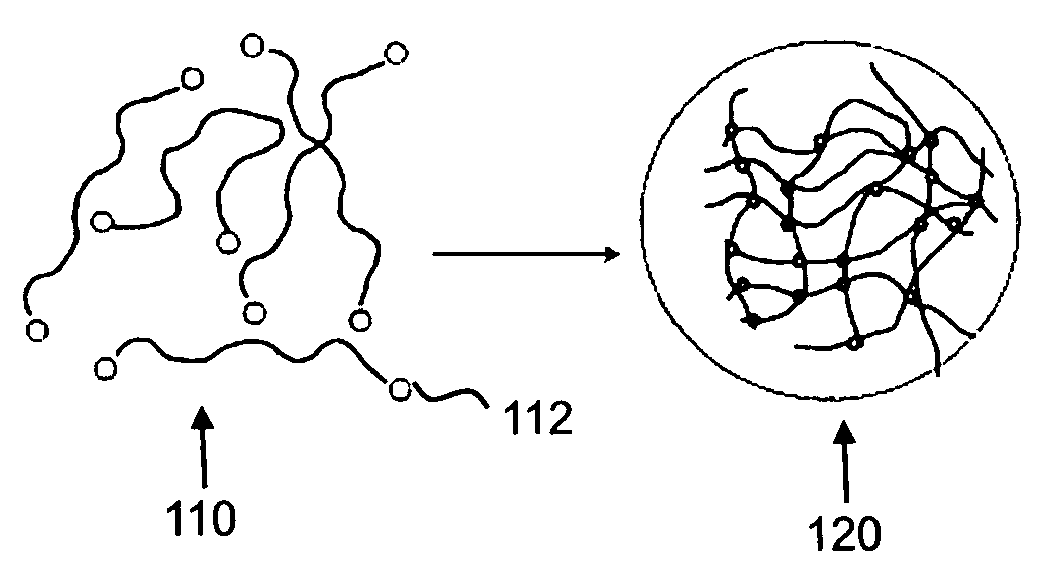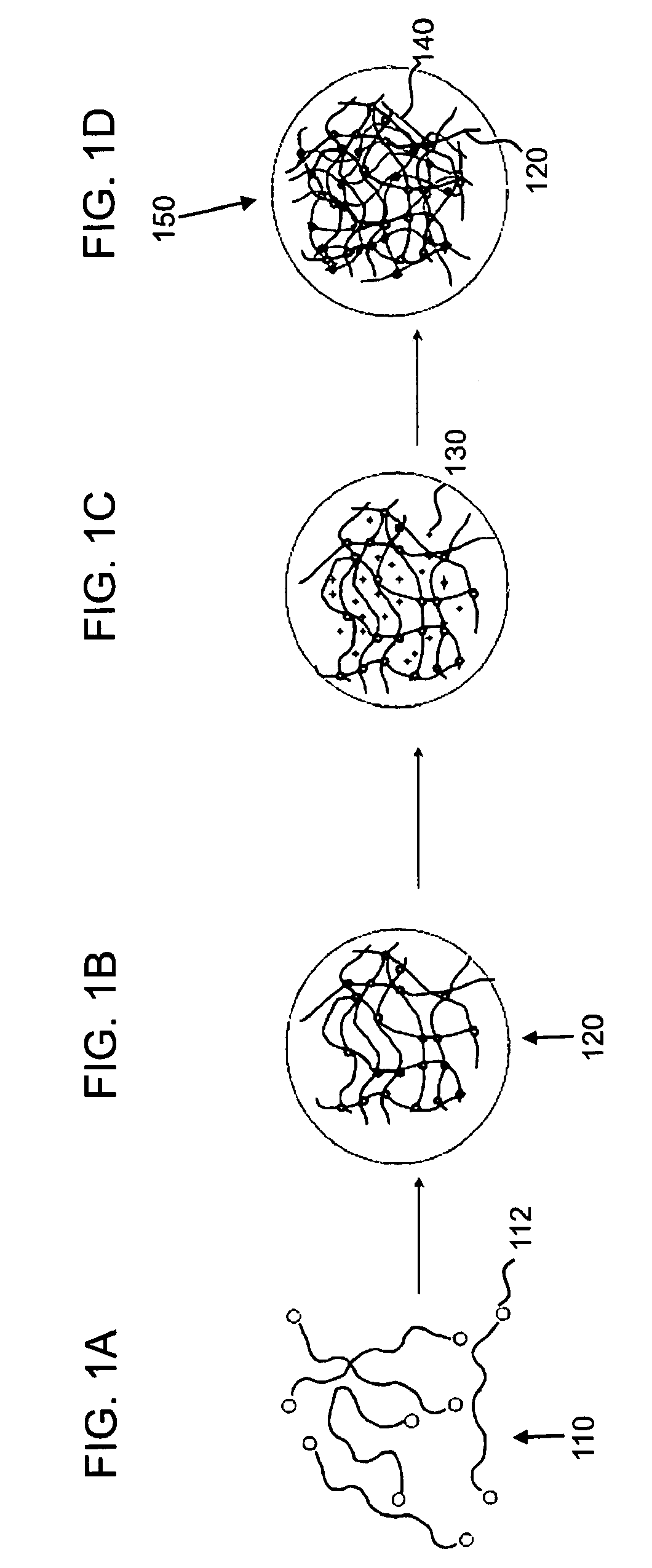Interpenetrating polymer network hydrogel contact lenses
a polymer network and hydrogel technology, applied in the field of vision correction, can solve the problems of contact lens intolerance, contact lens infection, immune reaction to the contact lens itself or to the protein, etc., and achieve the effects of high oxygen permeability, high water content, and high tensile strength
- Summary
- Abstract
- Description
- Claims
- Application Information
AI Technical Summary
Benefits of technology
Problems solved by technology
Method used
Image
Examples
Embodiment Construction
Synthesis of Interpenetrating Network Hydrogels
[0021]The present invention provides interpenetrating polymer network (IPN) hydrogels. The new hydrogels have properties making them desirable as biomaterials for use, e.g., in ophthalmic applications. The hydrogels are particularly well suited as a material for contact lenses.
[0022]FIG. 1 shows the steps required for synthesis of an IPN hydrogel according to the present invention. The starting material for the hydrogel is a solution of telechelic macromonomers 110 with functional end groups 112. The telechelic macromonomers are polymerized to form a first polymer network 120. Next, hydrophilic monomers 130 are added to the first polymer network 120. Hydrophilic monomers 130 are then polymerized and cross-linked in the presence of first polymer network 130 to form second polymer network 140. This results in formation of an IPN hydrogel 150.
[0023]Any hydrophilic telechelic macromonomer may be used to form the first polymer network. In a ...
PUM
| Property | Measurement | Unit |
|---|---|---|
| molecular weight | aaaaa | aaaaa |
| molecular weight | aaaaa | aaaaa |
| tensile strength | aaaaa | aaaaa |
Abstract
Description
Claims
Application Information
 Login to View More
Login to View More - R&D
- Intellectual Property
- Life Sciences
- Materials
- Tech Scout
- Unparalleled Data Quality
- Higher Quality Content
- 60% Fewer Hallucinations
Browse by: Latest US Patents, China's latest patents, Technical Efficacy Thesaurus, Application Domain, Technology Topic, Popular Technical Reports.
© 2025 PatSnap. All rights reserved.Legal|Privacy policy|Modern Slavery Act Transparency Statement|Sitemap|About US| Contact US: help@patsnap.com



